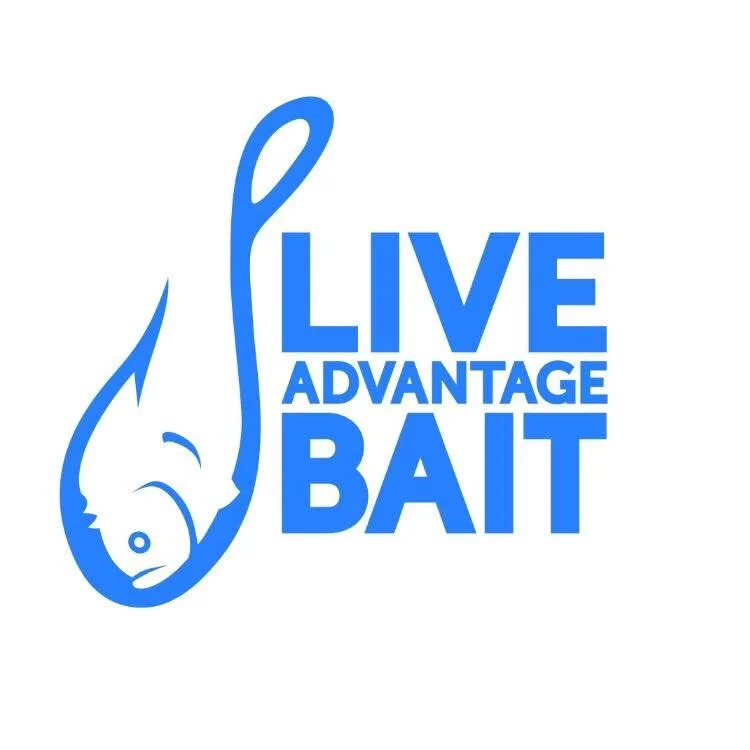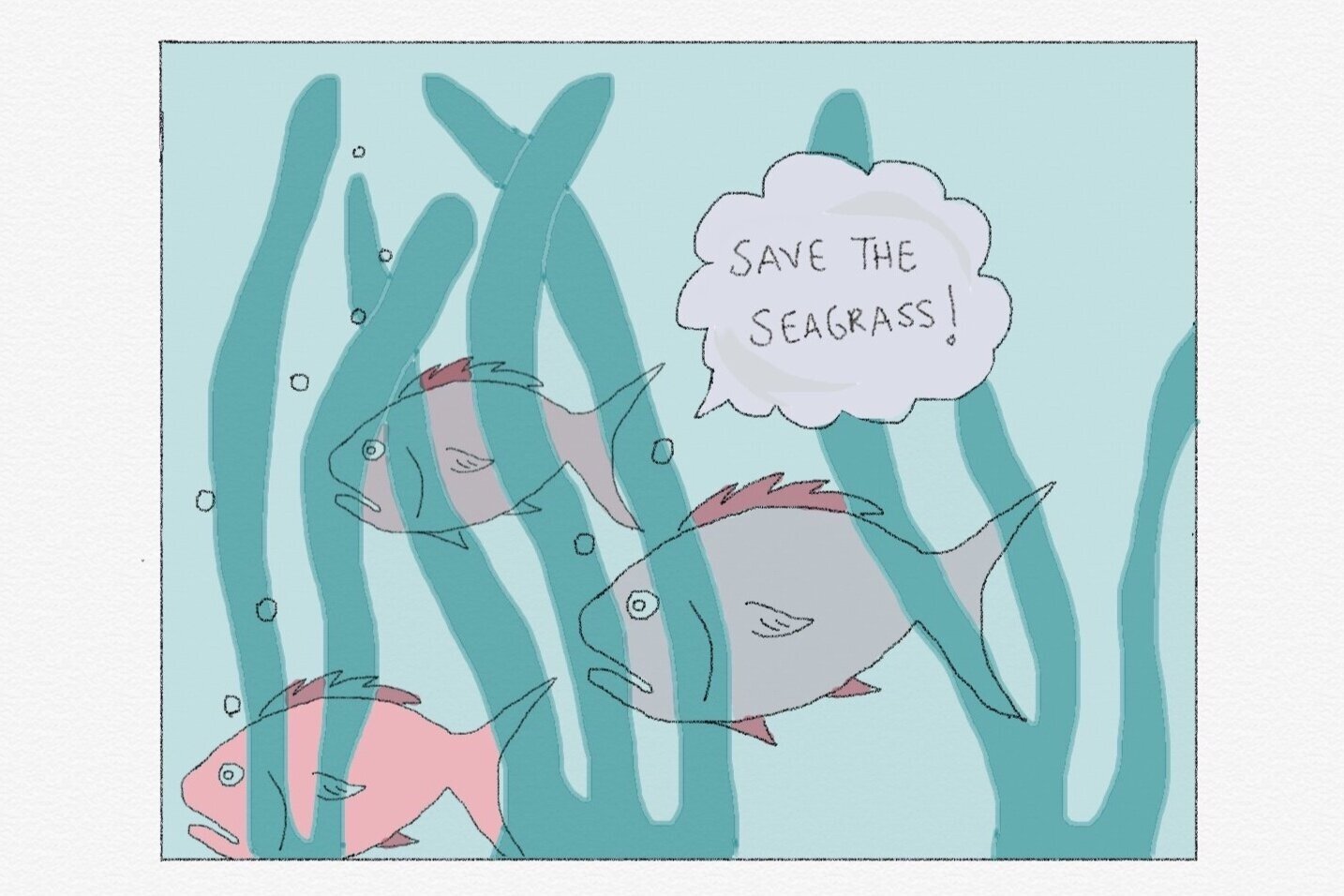Why pinfish may be the key to seagrass restoration success
Why pinfish may be the key to seagrass restoration success
Pinfish fulfill an ecological niche that leads many to believe they are a keystone species in seagrass communities. Pinfish not only help keep seagrass blades clean and flourishing, but they also control grazing populations and provide an important role in estuary nutrient recycling. This begs the question, which comes first, a healthy seagrass population or a healthy pinfish population? We argue coupling a healthy pinfish population with a seagrass restoration project may lead to higher success and long-term sustainability.
Pinfish are one of the most common and widely distributed fishes in the southeastern U.S., usually found in association with submerged structures such as mangroves (Odum & Heald 1972), seagrass beds (Stoner 1980, Jordan et al 1996), oyster reefs (Coen et al 1999) and salt marshes (Dahlberg 1972). Pinfish spend most of their life, from 11-19mm post-larvae to adult within the estuarine environment, with adults migrating to the ocean each winter to reproduce before returning to the estuary. Research completed by Potthoff & Allen (2003), found pinfish exhibit strong site fidelity after recruitment, with 90% of tagged fish remaining within 9.4m of their tagging location in both high energy and low energy environments; only 10% of fish moving greater than 20m over the 4 months of their study. This is consistent with a previous study that found pinfish to move less than 30m from their location of recruitment (Irlandi & Crawford 1997).
Pinfish are omnivores, with a diet comprising 30 to 50% plant material. Their favorite food is shrimp, amphipods, and epiphytes of seagrass, in this way they help maintain the seagrass bed by cleaning the blades to allow more efficient photosynthesis to take place.
Pinfish are also known to be voracious and aggressive feeders and to compete with many other fish for space and resources in the estuarine environment. In this way, they control the population density of grazers and maintain the balance in the estuarine environment between the various trophic groups.
As one of the most significant prey items to most estuarine predatory fish, birds, and marine mammals, they also represent one of the most significant links between primary production and secondary production within our marine estuaries (Darcy 1985). In the winter each year, adult pinfish migrate offshore to spawn. This migration leads to the movement of nutrients from the estuary to the ocean environment. Moving these nutrients offshore in a highly available and delicious package of a pinfish not only reduces the amount of nutrients within our already nutrient stressed estuaries but feeds offshore food webs including species like gag grouper and snappers.
Why should we consider pinfish restoration in our estuaries?
Over the last several decades there have been enormous losses of seagrass meadows in many of our estuaries. Loss of seagrass habitat has been attributed to several factors including freshwater discharges, harmful algal blooms, cold snaps, eutrophication, and pollution. This represents a loss of millions of aquatic organisms, fish, and invertebrates that depend on seagrass habitats. And the destruction continues.
When entire ecosystems require restoration, fisheries managers often look to restocking ecologically significant plant and fish species to aid in recovery. Seagrass, oysters, snook, and red fish are the usual species to be restored in South Florida, however, we argue pinfish should be added to this list.
As stated earlier, pinfish provide an invaluable ecological role in keeping seagrass blades clean and controlling grazier populations. A cheap and sustainable ‘farmer’ of the seagrass beds we are aiming to restore. They also show high site fidelity, meaning it is unlikely pinfish would naturally migrate into a new area except for in the spring each year when the new recruitment arrives. It is not a coincidence many of the same areas we find seagrass loss we also find a collapse of the pinfish population. Therefore when restoring a seagrass bed, we should consider also restocking a few natural ‘farmer’s’, aka pinfish, in the same area.
Pinfish are also one of the most significant prey species, enhancing the aid to the recovery of our predatory fish, mammals, and birds, and therefore the success of predatory fish restocking programs. Spending money or effort restoring predatory species such as red drum, without ensuring they have prey to eat, may just result in a waste of time as fish either die of starvation or leave the estuary altogether. Ensuring there is a healthy prey population before restoring up the food chain just makes sense.
Can pinfish restocking be done successfully?
In 2017 and 2018, we at Live Advantage Bait LLC teamed up with volunteers from the Florida Oceanographic Society for the first-ever attempt at pinfish restoration. We compared wild relocated pinfish with captive-reared pinfish, releasing 6000 fish in a struggling seagrass bed in the Indian River Lagoon. All fish were anchor tagged and flyers were distributed in case anyone located a tagged fish in the area. Also, over three months, baited traps, passive observations, and several seines were completed in the restocking area.
We found the project to be a large success. Many of the fish became resident, with the number of pinfish in the larger area increasing 70% longer after release. And there was no difference between wild relocated vs captive-reared pinfish. Future research should be completed to optimize methods and determine impacts on the larger seagrass community health.



